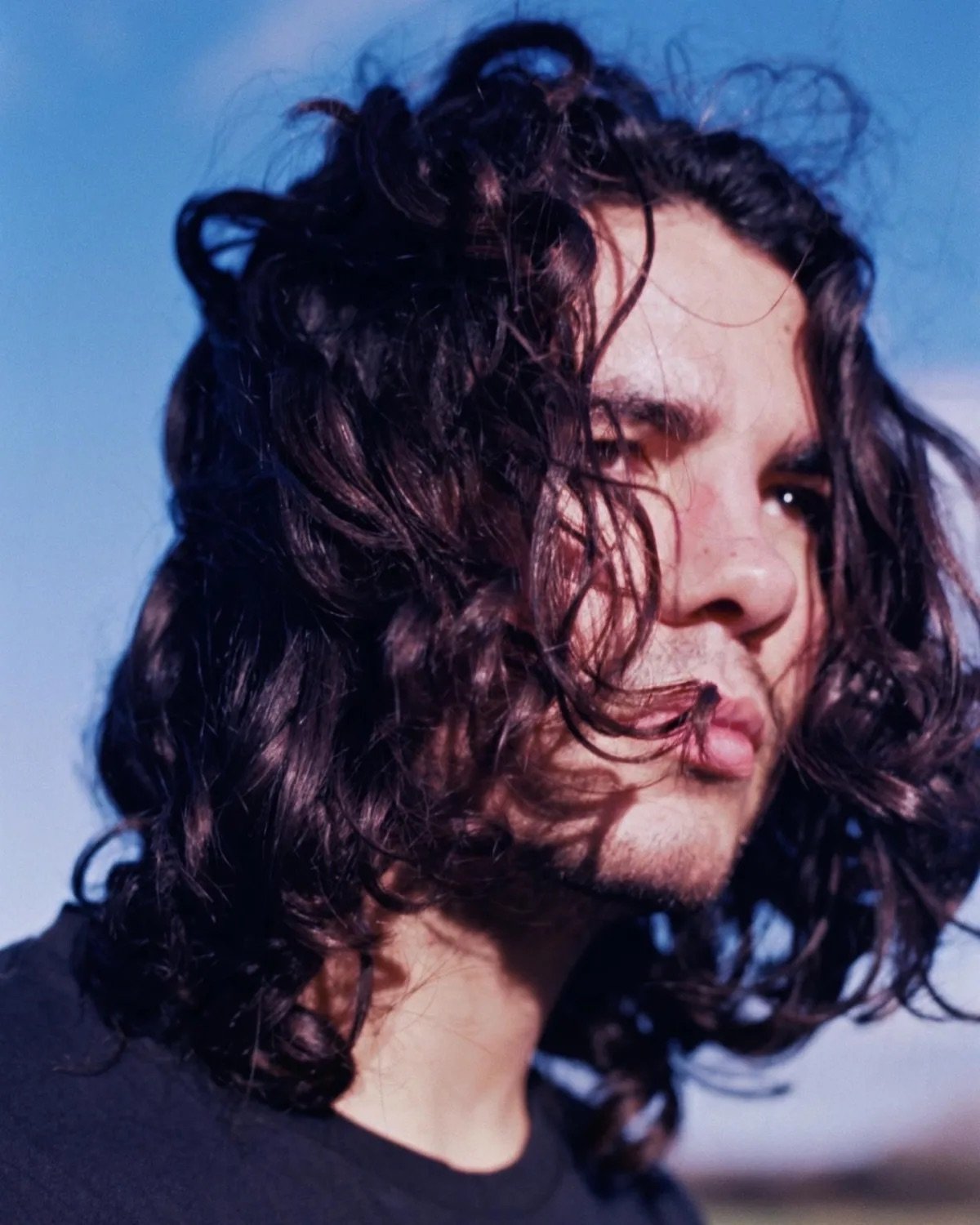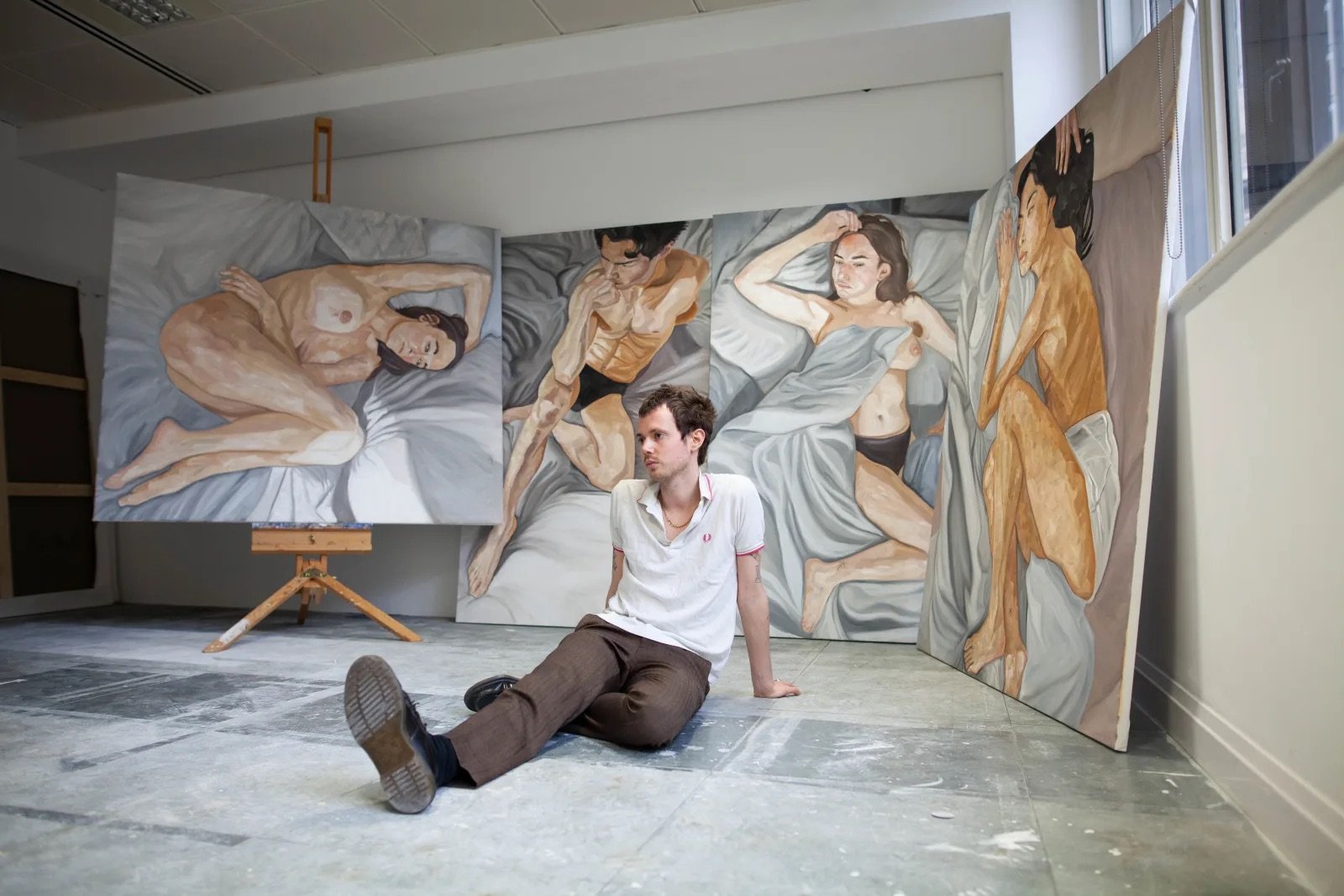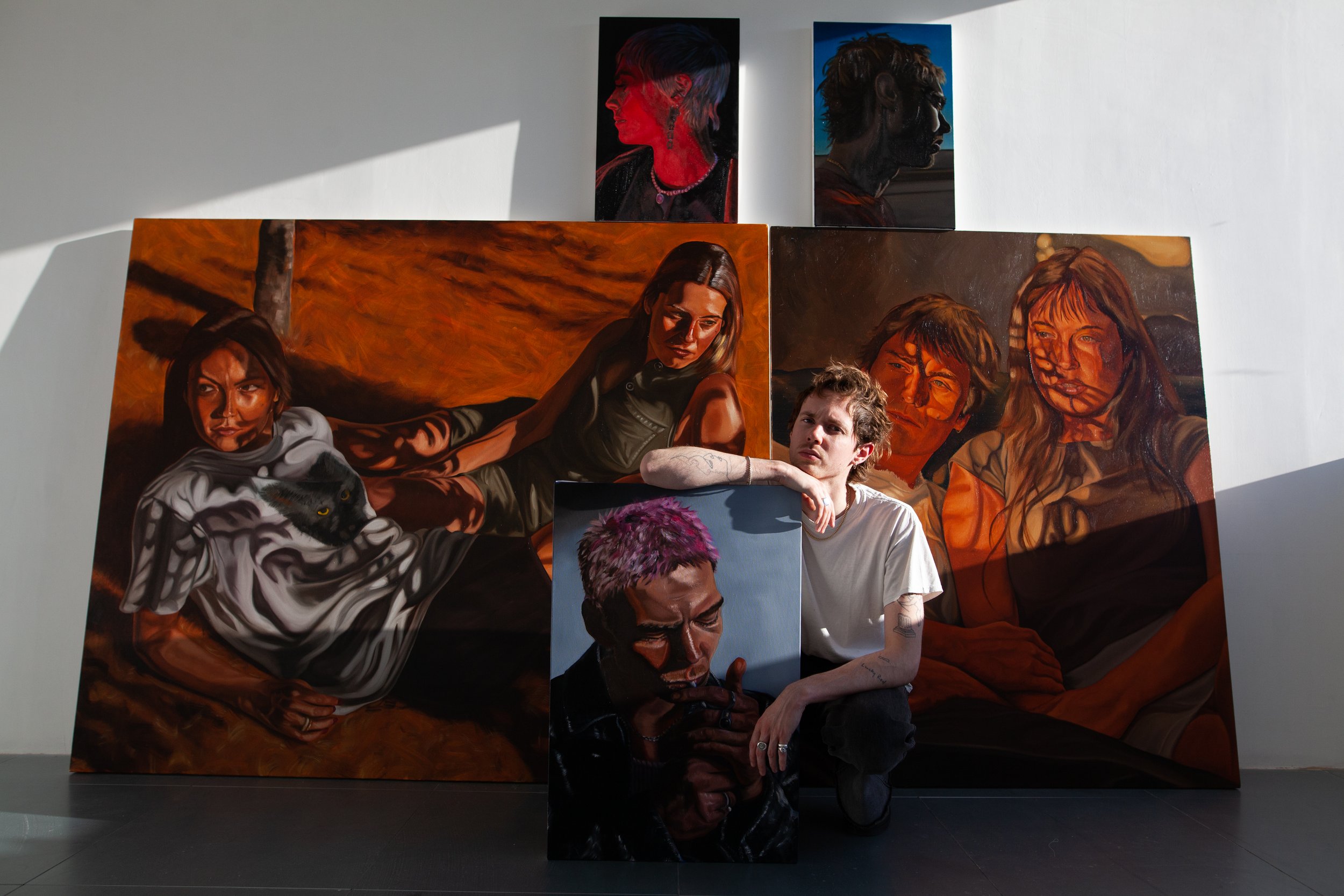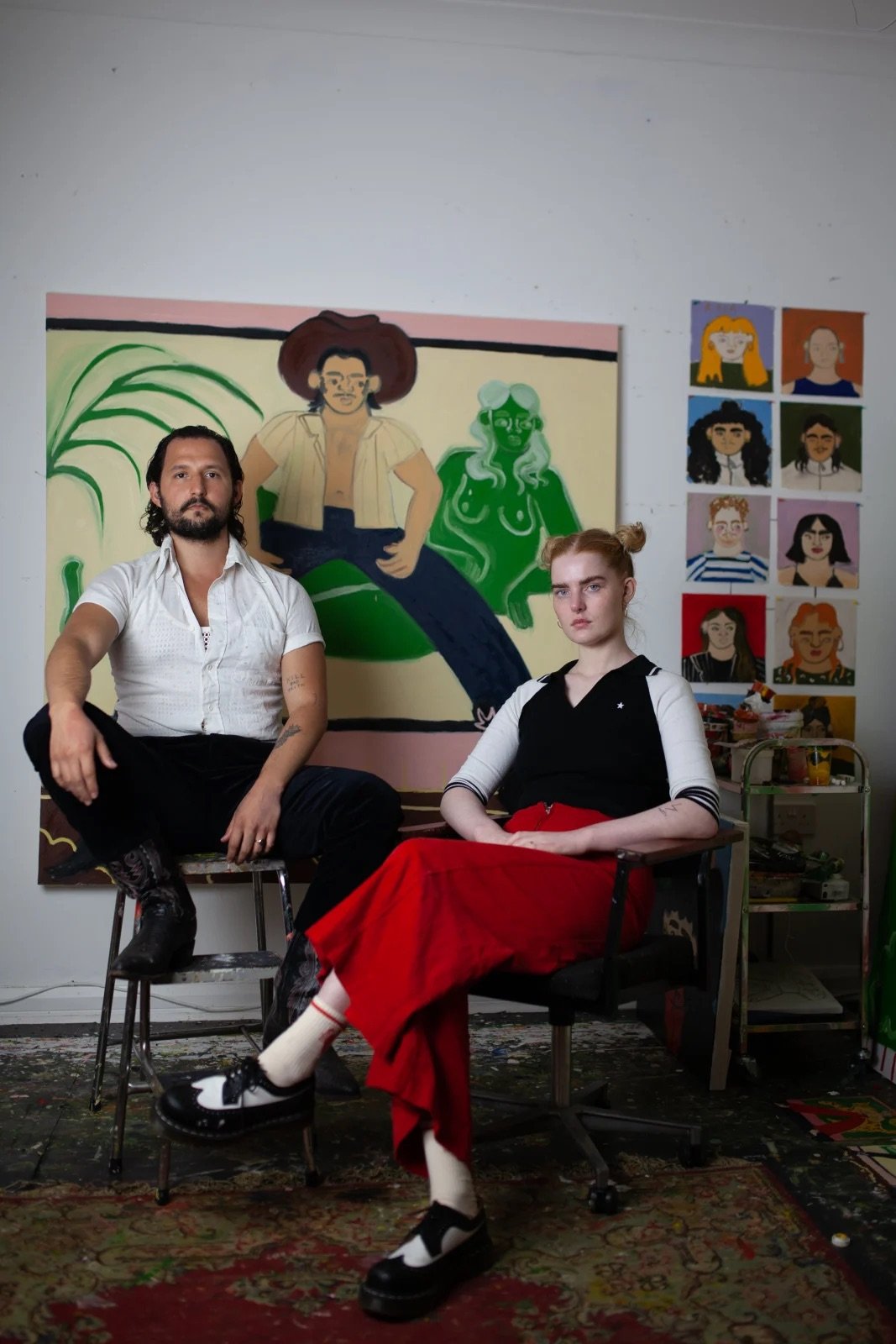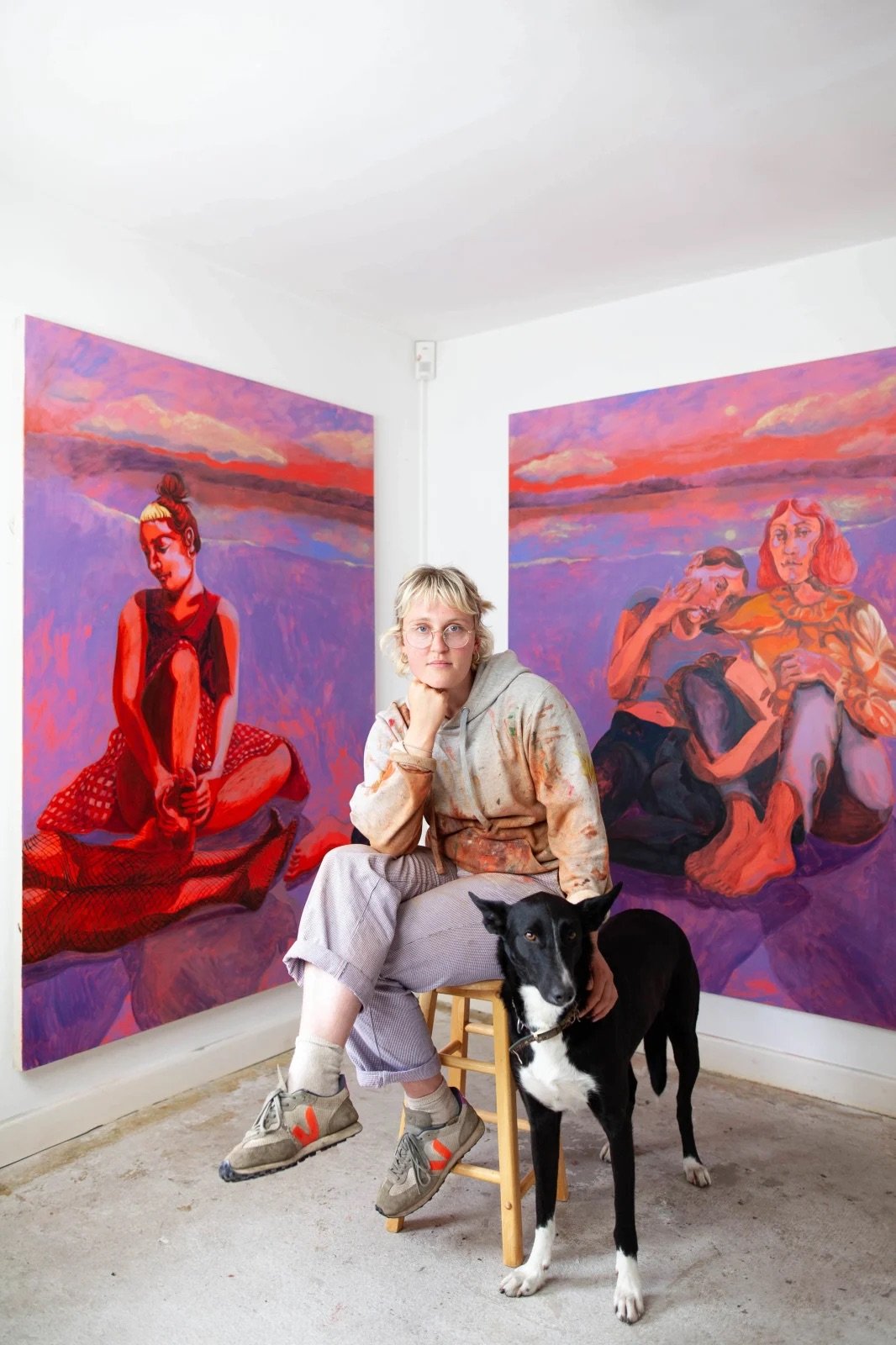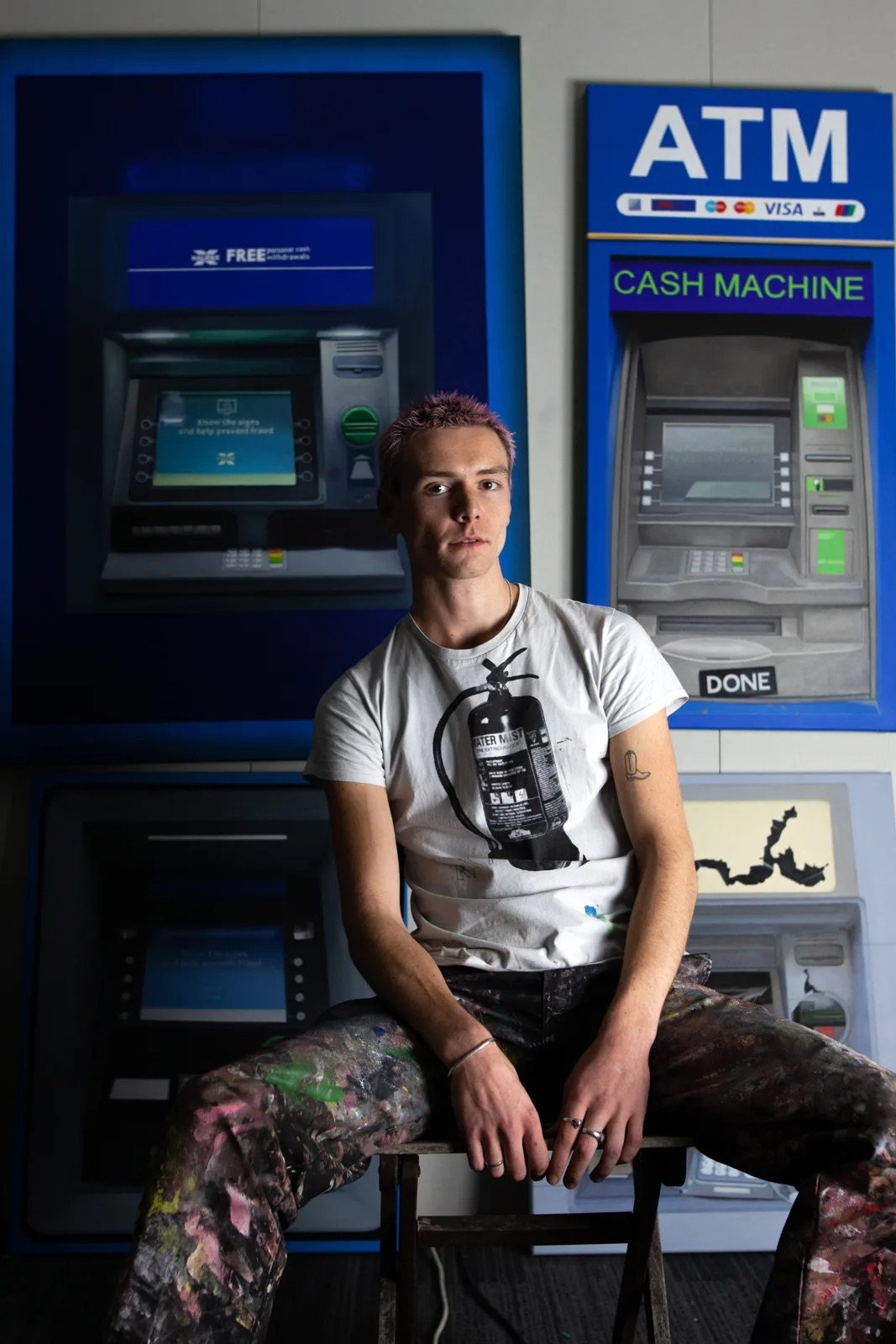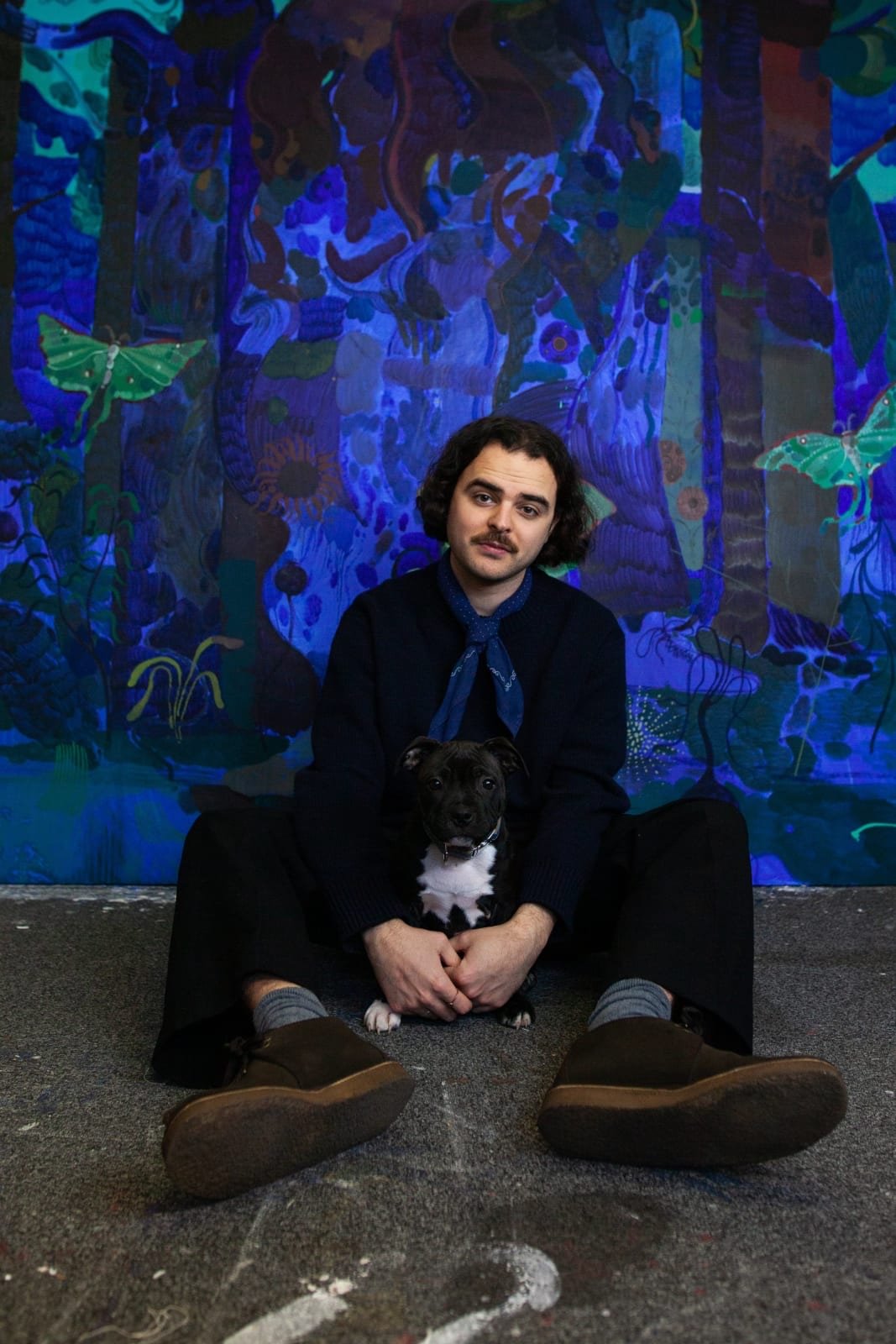What Does the Next Generation of Artists in the UK Look Like? Step into the Studio with Photographer Brynley Odu Davies to Find Out
Photographers have continuously flirted with the subject of an artist in their studio for the last seventy years. From Mary Homes’ portraits of a crouched Jackson Pollock, with a cigarette dangling from the mouth, dripping paint onto canvases stretched out on the floor, to Henri Cartier-Bresson’s intimate views into Henri Matisse’s final years, to Bruce Bernard’s pictures of Francis Bacon, Lucian Freud, Michael Andrews and Frank Auerbach, it seems as if all the greats have at one point or another stepped in front of the camera.
As a consumer of these images, it is thrilling to get a glimpse into an artist’s working world. After all, a studio is a physical manifestation of an artist’s mind. It is here where brilliant ideas often come to fruition, and their creativity is truly visible. Yet, this photographic glimpse into greatness should not be reserved only for those with a reputation afforded to them by art history on their side. In today’s current art climate of actively highlighting emerging and underknown artists, it would be incorrect to do so.
Enter Brynley Odu Davies - the young Peckham-based photographer whose new series of artist studio portraits at STUDIO WEST are shaking up this tradition.
Brynley Odu Davies. Photograph: Milly Cope.
“For me, going into each studio was like entering a unique universe built from the singular imagination of each specific artist.”
From the beginning, Davies had always been interested in portraiture. He recalls spending hours on end learning about musicians he had come across in magazines and books, going deeper and deeper down the rabbit hole of research to uncover photographers who had captured stellar stage moments, and eventually ending up in the depths of their image archive. Thus, it is unsurprising that Davies began his career shooting performers in his local music scene. However, as many things did, this type of work came to a halt with worldwide restrictions implemented due to the pandemic.
Having always been drawn to people, Davies capitalised on this newfound opportunity to make friends with artists he had seen out and about on daily walks in the neighbourhood. So naturally, the camera soon came into play, resulting in the first studio shoots of a photographic series that would ultimately organically transform into a three-year passion project comprising photographs of approximately 200 artists in their working environments.
Unlike his previous work, where capturing a sense of his subject was harder, these intimate moments with artists in their studio allowed creativity and character to merge. This is no small feat for any creative, but Davies does it with ease. Of this quality, painter Tom White notes how “he allows [the artist] to present a self-prescribed persona to the camera while simultaneously capturing an element of what lies behind the guise.”
When asking Davies about what drew him to do this project and who he chose to photograph, he noted that it was the art that brought him in and the people that made him stay. Sometimes he would discover an artist by scrolling on Instagram. Other times he would meet a new face by way of mutual friends. Through this increasingly expanding network of artists, Davies soon found himself shooting different artists nearly five times a week, each located in various cities up and down the UK, for almost two years straight. One week he might travel to Glasgow to shoot the artist duo Sophie Vallance Cantor and Douglas Cantor, the next all the way down south to capture Nettle Grellier in Cornwall, and then back up to London for a quick session with the London-based painter Tom White over by Tower Bridge.
When thinking about art in the UK, London immediately springs to mind. Edinburgh or Glasgow, perhaps. Maybe Manchester too. But unfortunately, many are unaware of the breadth and depth of art to be found nationwide. Before this project, Davies, too, had fallen prey to this narrower view of the UK art scene. However, this is no bad thing; rather, it afforded two unique opportunities. First, it opened him up to a new world of environments, artists, and artwork to be discovered - first through the photographer’s eyes and then through his camera lens. Second, and perhaps more importantly, as an outsider to this world, it allowed him to enter with a fresh new perspective on how art across the UK might be connected together.
“It wasn’t about just finding the best or most successful artists, and instead aimed to celebrate and spotlight all the amazing young artists working throughout the UK.”
This desire for cohesion is certainly expressed in the resulting photographs. Throughout the project, Davies stuck to several rules. In the project's early stages, when he realised it had the potential to be something incredibly special (a feeling that turned out to be very acutely accurate), Davies reached out to his old university lecturer, who wisely told him to stick to two lenses for one camera and keep it consistent. And that he did. The result is a seamless photographic narrative, all captured on a Canon 5D Muck 2 using a 35mm and 24mm lens. Other rules include positioning the artist so they were taller than their artwork - placing the personality above the product - and consistently utilising natural light, which was emitted either from a lightbox or any windows nearby.
The most important ‘rule’ was the conversation between the photographer and artist before the session. It is easy to forget to get to know somebody, establish rapport, and become comfortable with one another. These small interactions can produce some of the best connections and ultimately result in the best outcomes.
Curtis Holder, Crystal Palace, London, 2021. © Courtesy of the Artist and STUDIO WEST.
“There is something really special about shooting artists in their studios. As the photographer, I would arrive and there would already be this amazing room full of their work offering a natural setting for the photo.”
Confident, calm, cool, creative, connected - these attributes are found in each and every photograph. Of the experience, London-based artist Curtis Holder noted how a “photoshoot wouldn’t be an accurate description of our time together. This was simply two artists talking about their practice and what pushes their passion. The conclusion was some amazingly intimate images of time spent in creative conversation.”
Daisy Parris, Croydon, London, 2021. © Courtesy of the Artist and STUDIO WEST.
Daisy Parris, Croydon, London, 2021. © Courtesy of the Artist and STUDIO WEST.
This intimacy only grew with time as Davies photographed many of these artists on multiple occasions. For example, painter Daisy Parris, known for their electric abstract canvases, was photographed on eight separate occasions since 2020. Each new session photographically captures a different stage of their artistic and personal development. This connection is evident in the resulting portrait chosen for the series.
Indeed, Davies cites this as one of the most rewarding experiences of the project. With fondness, he recalls how through his photographs, he had captured artists such as James Owens when he was still living in a shared house, painting in his living room, or Callum Eaton during his years working in Bath. Today both artists are highly regarded and have since exhibited both in London and internationally. To be able to follow the elevated careers of artists right as they are taking off is incredibly exciting. But to have this trajectory documented is even more insightful.
“The highlight of the project has been meeting all of the amazing artists. As a creative person myself, I found kindred spirits in all of the artists I met.”
Who knows what will become of the artists seated before Davies’ camera lens? Will they become the next leading art market darlings? Will they go on to be represented by the world’s blue-chip galleries? Will they have blockbuster shows at leading museums in the UK and beyond?
In all honesty, it does not matter. This is not the point of the project. What is important is that by giving equal consideration to both the artist and their work, Davies has shone a spotlight on 200 young creatives who deserve our attention. More importantly, he has photographically immortalised artists who represent the UK’s thriving, diverse and enigmatic art scene as a permanent marker of what this country’s next generation of artists has to offer the art world today.
Artist Portraits: Brynley Odu Davies is on display at STUDIO WEST until May 31, 2023.
Many thanks to STUDIO WEST curator Bella Bonner-Evans on behalf of MADE IN BED for her contributions to this piece.
Ilaria Bevan
Editor in Chief, MADE IN BED


